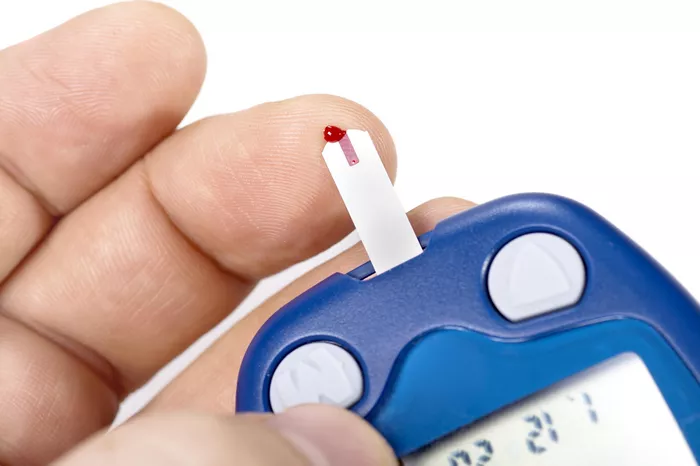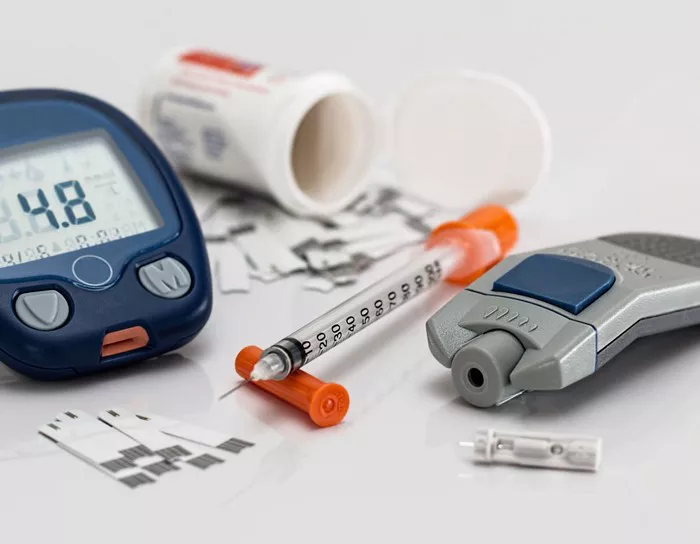Diabetes mellitus, a chronic metabolic disorder characterized by elevated blood sugar levels, encompasses a spectrum of diseases with diverse etiologies, pathophysiological mechanisms, and clinical presentations. While type 1 and type 2 diabetes are the most prevalent forms, there are additional types of diabetes that warrant recognition and understanding. In this comprehensive article, we delve into the intricacies of the six types of diabetes mellitus, unraveling their unique features, risk factors, and implications for diagnosis, management, and prevention.
1. Type 1 Diabetes: Unraveling the Autoimmune Enigma
Type 1 diabetes, formerly known as insulin-dependent or juvenile-onset diabetes, is an autoimmune disease characterized by the destruction of pancreatic beta cells, leading to absolute insulin deficiency and dependence on exogenous insulin therapy for survival. Despite its relatively low prevalence compared to type 2 diabetes, type 1 diabetes often presents in childhood or adolescence and requires lifelong management.
- Etiology: The etiology of type 1 diabetes involves a complex interplay of genetic susceptibility, environmental triggers, and immunological factors. Genetic factors, particularly variants in the human leukocyte antigen (HLA) region, play a significant role in predisposing individuals to type 1 diabetes. Environmental triggers such as viral infections, dietary factors, and gut microbiota dysbiosis may initiate or accelerate the autoimmune destruction of pancreatic beta cells.
- Pathophysiology: In type 1 diabetes, autoreactive T cells infiltrate the pancreatic islets (islets of Langerhans) and target beta cells, leading to their destruction through a process of autoimmune-mediated cytotoxicity. As beta cell mass declines, insulin secretion becomes insufficient to maintain normal blood sugar levels, resulting in hyperglycemia and clinical symptoms of diabetes.
- Clinical Presentation: Type 1 diabetes typically presents with acute onset of symptoms, including polyuria (excessive urination), polydipsia (excessive thirst), polyphagia (excessive hunger), weight loss, fatigue, and ketosis. Individuals with type 1 diabetes require lifelong insulin therapy to maintain blood sugar levels within target ranges and prevent acute complications such as diabetic ketoacidosis (DKA).
2. Type 2 Diabetes: Confronting Insulin Resistance and Beta Cell Dysfunction
Type 2 diabetes, the most common form of diabetes, is characterized by insulin resistance, impaired insulin secretion, and progressive beta cell dysfunction. Unlike type 1 diabetes, type 2 diabetes often develops in adulthood and is closely linked to modifiable risk factors such as obesity, sedentary lifestyle, and unhealthy dietary habits.
- Etiology: Type 2 diabetes arises from a combination of genetic susceptibility and environmental factors such as obesity, physical inactivity, and unhealthy diet. Genetic variants affecting insulin signaling, beta cell function, and glucose metabolism interact with lifestyle factors to increase the risk of insulin resistance and dysglycemia. Family history of type 2 diabetes, ethnicity, and age are also important determinants of diabetes risk.
- Pathophysiology: Insulin resistance, the hallmark of type 2 diabetes, occurs when target tissues such as muscle, liver, and adipose tissue fail to respond adequately to insulin signaling, resulting in impaired glucose uptake and utilization. Beta cell dysfunction, characterized by decreased insulin secretion and impaired compensatory response to hyperglycemia, contributes to the progression of type 2 diabetes over time.
- Clinical Presentation: Type 2 diabetes may present with subtle or asymptomatic hyperglycemia, particularly in the early stages of the disease. Common symptoms include polyuria, polydipsia, fatigue, blurred vision, slow wound healing, and recurrent infections. Individuals with type 2 diabetes may require lifestyle modifications, oral medications, injectable therapies, and insulin therapy to achieve glycemic control and prevent complications.
3. Gestational Diabetes Mellitus: Navigating Pregnancy-Related Hyperglycemia
Gestational diabetes mellitus (GDM) is a transient form of diabetes that occurs during pregnancy and is characterized by elevated blood sugar levels that may pose risks to both the mother and the baby. While GDM typically resolves after childbirth, affected individuals are at increased risk of developing type 2 diabetes later in life, highlighting the importance of early detection and preventive interventions.
- Etiology: Gestational diabetes arises from a combination of maternal insulin resistance, hormonal changes, and placental factors that increase the demand for insulin production and secretion during pregnancy. Genetic predisposition, obesity, advanced maternal age, and previous history of GDM are risk factors for developing gestational diabetes.
- Pathophysiology: The pathophysiology of gestational diabetes involves insulin resistance, impaired beta cell function, and dysregulation of glucose metabolism, leading to hyperglycemia during pregnancy. Hormonal changes such as increased levels of placental hormones (e.g., human placental lactogen, progesterone, cortisol) and adipokines (e.g., leptin, adiponectin) contribute to insulin resistance and glucose intolerance in pregnant women.
- Clinical Implications: Gestational diabetes is associated with adverse pregnancy outcomes, including macrosomia (large-for-gestational-age infants), fetal macrosomia, birth trauma, neonatal hypoglycemia, preterm birth, and cesarean delivery. Maternal complications of gestational diabetes may include preeclampsia, gestational hypertension, cesarean delivery, and increased risk of developing type 2 diabetes later in life.
4. Latent Autoimmune Diabetes in Adults (LADA): Bridging the Gap Between Type 1 and Type 2
Latent autoimmune diabetes in adults (LADA), also known as type 1.5 diabetes, is a distinct form of diabetes that shares characteristics of both type 1 and type 2 diabetes. LADA is characterized by autoimmune destruction of pancreatic beta cells, similar to type 1 diabetes, but it typically develops in adults and progresses more slowly, resembling type 2 diabetes in its clinical presentation.
- Etiology: LADA arises from a combination of genetic susceptibility and autoimmune factors similar to type 1 diabetes. However, unlike classic type 1 diabetes, LADA typically occurs in adulthood and may initially present with features of type 2 diabetes.
- Pathophysiology: The pathophysiology of LADA involves autoimmune destruction of pancreatic beta cells by autoreactive T cells, leading to progressive beta cell dysfunction and insulin deficiency. However, the autoimmune process in LADA is often milder and slower compared to classic type 1 diabetes, allowing for a more gradual onset of symptoms and preservation of residual beta cell function.
- Clinical Presentation: LADA often presents with features of both type 1 and type 2 diabetes, making it challenging to diagnose. While individuals with LADA may initially respond to oral medications commonly used for type 2 diabetes, they may eventually require insulin therapy as beta cell function declines over time.
5. MODY (Maturity-Onset Diabetes of the Young): Unraveling Genetic Variants and Inherited Forms
Maturity-onset diabetes of the young (MODY) comprises a group of monogenic forms of diabetes characterized by autosomal dominant inheritance and mutations in specific genes involved in beta cell function, insulin secretion, and glucose metabolism. MODY often presents at a young age and is distinct from both type 1 and type 2 diabetes in its genetic basis and clinical features.
- Etiology: MODY arises from mutations in specific genes that disrupt beta cell function, insulin secretion, or glucose metabolism. These genetic variants are inherited in an autosomal dominant manner, meaning that individuals with a single copy of the mutated gene from one parent are affected.
- Pathophysiology: The pathophysiology of MODY varies depending on the specific genetic mutation and its effects on beta cell function and insulin secretion. Mutations in genes such as HNF1A, HNF4A, and GCK disrupt insulin production, glucose sensing, and beta cell development, leading to impaired glucose homeostasis and diabetes phenotypes.
- Clinical Presentation: MODY typically presents at a young age, often before the age of 25, and may be mistaken for type 1 or type 2 diabetes. However, individuals with MODY often have a strong family history of diabetes, with multiple generations affected by the disease. Clinical features of MODY may include mild hyperglycemia, absence of autoimmune markers, and variable response to oral medications commonly used for type 2 diabetes.
6. Neonatal Diabetes Mellitus: Uncovering Genetic Anomalies and Early-Onset Forms
Neonatal diabetes mellitus (NDM) is a rare form of diabetes that presents within the first six months of life and is characterized by persistent hyperglycemia requiring insulin therapy. NDM may be transient or permanent and can result from genetic mutations affecting beta cell function, insulin secretion, or glucose metabolism.
- Etiology: Neonatal diabetes arises from genetic mutations that disrupt beta cell function, insulin secretion, or glucose metabolism during fetal development. These mutations may be inherited in an autosomal dominant or recessive manner or may occur sporadically as de novo mutations.
- Pathophysiology: The pathophysiology of neonatal diabetes varies depending on the specific genetic mutation and its effects on beta cell function and insulin secretion. Mutations in genes such as KCNJ11, ABCC8, and INS disrupt potassium channel activity, insulin secretion, and beta cell development, leading to impaired glucose homeostasis and diabetes phenotypes.
- Clinical Presentation: Neonatal diabetes presents within the first six months of life with persistent hyperglycemia, failure to thrive, dehydration, and ketoacidosis. Infants with neonatal diabetes may require immediate initiation of insulin therapy to achieve glycemic control and prevent acute complications.
Conclusion: Embracing the Diversity of Diabetes Mellitus
In conclusion, diabetes mellitus comprises a diverse array of forms, each with unique etiologies, pathophysiological mechanisms, and clinical presentations. While type 1 and type 2 diabetes are the most prevalent forms, gestational diabetes mellitus, latent autoimmune diabetes in adults (LADA), maturity-onset diabetes of the young (MODY), and neonatal diabetes mellitus represent important subsets of the disease spectrum that warrant recognition and understanding.
Early detection, accurate diagnosis, and personalized management are essential for optimizing outcomes and preventing complications in individuals affected by diabetes mellitus. Multidisciplinary approaches to diabetes care, including genetic testing, lifestyle modifications, pharmacotherapy, insulin therapy, and patient education, are integral components of comprehensive diabetes management strategies.
By enhancing awareness, education, and research efforts across the spectrum of diabetes mellitus, healthcare providers, policymakers, and communities can work together to improve prevention, diagnosis, and management of this prevalent and potentially debilitating chronic disease, empowering individuals to lead healthier, more fulfilling lives.


























